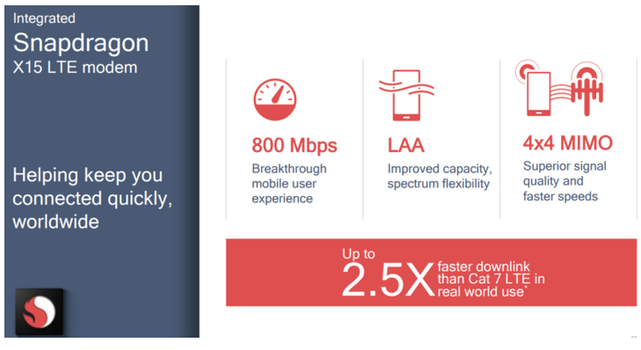Qualcomm has announced the Snapdragon 710 mobile platform, designed to push high-tier smartphones into the world of artificial intelligence (AI). The idea of the 700-series is to bring processor features that you’d find in flagship processors like the Snapdragon 845, but not on lower-end chipsets, to more affordable and slightly less powerful processors. With the Snapdragon 710, Qualcomm delivers on exactly that.
Qualcomm is making some big promises with the Kryo 360. For performance, you can expect a 20% overall increase in performance, 25% faster web browsing, and 15% faster app load times compared to the 660. This unique array of cores will also allow for improved battery life. We are certain that many of you will especially enjoy that.
The Snapdragon 710 is designed with highly efficient architectures for artificial intelligence, featuring a multi-core AI Engine and neural network processing capabilities. The Snapdragon 710 is the first mobile platform in the new 700-tier portfolio, designed to exceed what is expected from today’s high-tier mobile experiences by bringing select premium-tier features to a broader audience.
The octa-core CPU is made up of two high performance custom Kryo 360 cores running at 2.2GHz to do the heavy lifting. The remaining six Kryo 360 cores have a 1.7GHz clock speed and are employed for general housekeeping. Crunching graphics is the Adreno 616 GPU. The Kryo 360 architecture, which is based on ARM Cortex technology, is optimized to provide a 20% hike in performance and 25% faster browsing; it also opens apps 15% faster.
The Snapdragon 710 Mobile Platform’s architectures are said to run on-device AI applications quickly and efficiently. Speaking of efficient, a device powered by the Snapdragon 710 Mobile Platform will use 40% less power for gaming and 4K HDR video playback. Streaming video consumes 20% less power. When it is time to replenish the battery, Quick Charge 4+ charges the cell to as much as 50% in just 15-minutes.
OEMs are able to start using the Snapdragon 710 in devices starting today, but it’s unclear which devices will support it first. Qualcomm does say, though, that devices will hit the market using it during this quarter.




